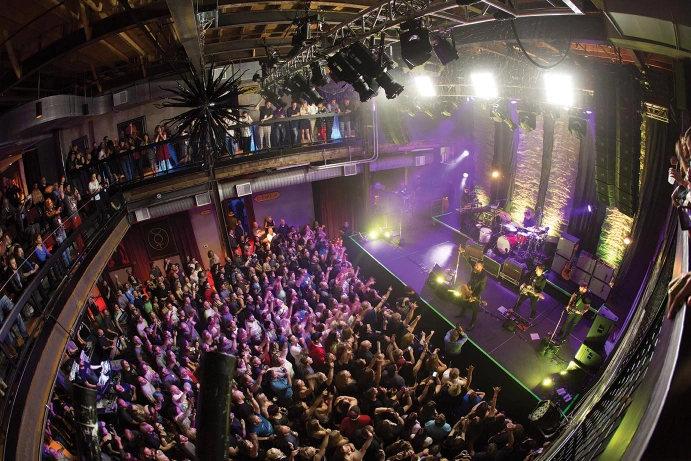When it comes to staging for events, the choice between portable and fixed options is a significant consideration. Each type of staging has its unique advantages and drawbacks, making it essential to assess your venue’s specific needs and your event requirements. This article explores the differences between portable and fixed staging, helping you make an informed decision.
Portable Staging
Overview of Portable Staging
Portable staging is designed for versatility and ease of use. With systems like Magnetic Portable Staging UK, these platforms can be locked together without the need for tools, making setup a breeze.
Key Benefits of Portable Staging
- Quick Setup and Teardown
- Portable stages can be assembled in minutes, allowing for rapid transitions between events. This is particularly beneficial for venues that host various activities or need to frequently change their setups.
- Compact Storage
- Once the event is over, portable staging can be stored flat, taking up minimal space in your venue. This makes it ideal for schools, community centers, and multipurpose venues where space is at a premium.
- Versatility for Different Events
- If your venue hosts a range of events—from concerts to conferences to theatrical performances—portable staging can adapt to different configurations. This flexibility allows you to tailor the setup to suit the specific needs of each event.
- Cost-Effective for Occasional Use
- For venues that do not require a permanent stage, portable staging can be a more economical choice. You can invest in a system that meets your needs without the higher upfront costs associated with fixed staging.
Ideal Use Cases for Portable Staging
- Schools: Perfect for assemblies, performances, and other events where space and time are limited.
- Pop-Up Events: Ideal for temporary setups at fairs, festivals, or community gatherings.
- Multi-Use Venues: Great for venues that host a variety of events and need the flexibility to change layouts frequently.
Fixed Staging
Overview of Fixed Staging
Fixed staging, as the name suggests, is a permanent installation that requires no assembly. This type of staging is built into the venue and is designed for long-term use.
Key Benefits of Fixed Staging
- Stability and Durability
- Fixed stages are typically constructed with high-quality materials designed for long-term use. This permanence provides a solid foundation for performances and events, ensuring safety and reliability.
- No Assembly Required
- Since fixed staging is permanent, there is no need for setup or teardown time. This can streamline the event process, allowing for quicker transitions and less logistical hassle.
- Enhanced Aesthetics
- A fixed stage can be designed to complement the venue’s architecture and overall ambiance, creating a polished and professional look.
- Consistent Availability
- For venues that host events daily or regularly, having a fixed stage means you’re always ready for performances, presentations, or other activities without the need for additional setup.
Ideal Use Cases for Fixed Staging
- Theaters: Perfect for venues that host regular performances and require a dedicated stage.
- Concert Halls: Ideal for music venues that need a reliable and high-quality performance area.
- Auditoriums: Suitable for schools or institutions that hold frequent lectures, presentations, or ceremonies.
Which One Wins?
Choosing between portable and fixed staging ultimately depends on your specific needs and circumstances.
Consider Portable Staging If:
- You host a variety of events with different requirements.
- You need the flexibility to reconfigure your space frequently.
- Storage space is limited, and you want a solution that can be easily stowed away.
Consider Fixed Staging If:
- Your venue hosts events on a regular basis, and a permanent stage is necessary.
- You prefer a no-fuss solution that requires no setup time.
- Aesthetic appeal and durability are top priorities for your venue.
Budget Considerations
Budget is often a crucial factor in the decision-making process. If funding is a concern, explore options for grants or financing. Programs like Funding Your Staging Purchase can provide assistance and help you secure the necessary resources for your staging needs.
For More Insight: Staging for Sale: The Smarter Way to Upgrade Your Events
Conclusion
Both portable and fixed staging options have their unique advantages, making them suitable for different scenarios. Portable staging offers flexibility and ease of use, while fixed staging provides stability and permanence.
When making your choice, consider the specific needs of your venue, the types of events you plan to host, and your budget. By carefully evaluating these factors, you can select the staging solution that best aligns with your goals, ensuring successful and memorable events for your audience.
Read the full guide
https://www.portablestage.co.uk/modular-staging-uk/
https://tributeprintedpics.co.uk/the-rotation-of-nexgen-outboard-theatrical-production-transforming-spaces-in-proceedings/
https://www.freelistinguk.com/listings/nexgen-portable-stage-uk
https://www.smallbusinessads.co.uk/listing/nexgen-portable-stage-uk/
https://www.healthstaffdiscounts.co.uk/biz/a/145190-NexGen-Portable-Staging-UK
https://www.slideshare.net/nexgenportablestagin?tab=about
